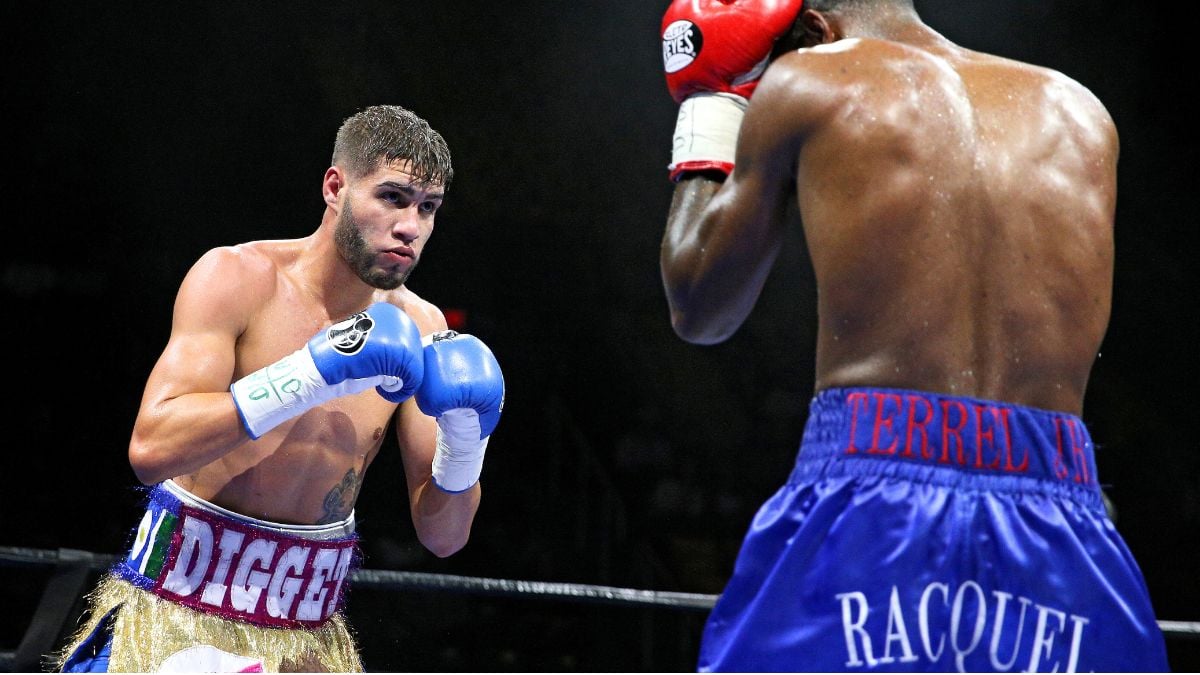Risks come with every job, though some professions do involve actual life-threatening situations. Consider firefighters, police officers, or, heck, even construction workers — they all face dangerous challenges time and time again. Admittedly though, we should be adding athletes to this list, as we’ll soon see.
We don’t often hear about life-threatening moments that endanger a boxer’s life, but when they do happen, we unfortunately can’t be entirely shocked. Tragically, Prichard Colon was one of the many boxers whose career and future changed in the blink of an eye — an occupational hazard, if you will. While he was undoubtedly aware of the potential dangers that come with fighting for a living, no one could have predicted what happened. Here’s everything that befell him on the day of his very last match.
Prichard Colon’s last match, explained
In October 2015, at the age of 30, Prichard Colon’s career came to a tragic and abrupt end due to a severe, life-threatening brain injury. This injury occurred during his match with Terrel Williams, where Colon was repeatedly struck on the back of the head — a move known as “rabbit punching,” which is, unsurprisingly, illegal in boxing. Although Williams was deducted one point, the damage had already been done, and it went unnoticed for nine full rounds.
Tragically, the fight ended with devastating consequences: Colon suffered a 1.5 cm left-sided subdural hematoma, or in other words, a brain hemorrhage. While the brain bleeding occurred during the bout, Colon did not show any symptoms until he was back in the dressing room. According to reports, the boxer felt dizzy, promptly collapsed, and fell into a coma that lasted 221 days. During this time, Colon was in a vegetative state, confined entirely to his hospital bed and room.
Six years later, the WBC revealed that Colon’s bleeding was caused by a portion of his skull that had fractured and collapsed, pressing on his brain. He underwent an emergency hemicraniectomy to reduce brain swelling and address the hematoma. Sadly, Colon remains in a mostly unresponsive state, though friends and family have assured that his health is gradually improving, and his overall condition is stable.
The chances of a full or even partial recovery are, regrettably, nearly impossible. He has been left with severe physical and neurological impairments, including the loss of speech, which has yet to return. He is also unable to walk and relies on a motorized wheelchair instead. However, regular updates on Instagram, posted by Colon’s parents, indicate that he can understand and even react to other people’s speech, which is, understatedly, a gigantic improvement.
As for Terrel Williams, he took a two-year break until Colon awakened from his coma. In 2018, during an interview with The Ring, Williams finally addressed the incident. “I pray for Prichard every day. That’s never going to change. I wish him nothing but peace and health,” he said. “No one wants what happened to Prichard to happen to anybody. All boxers are brothers. I would never intentionally harm someone like that.” Williams is under indefinite suspension by the Pennsylvania State Athletic Commission, with his last match dating back to 2019.
